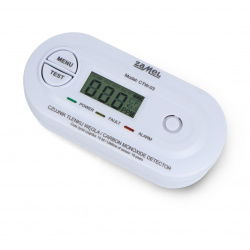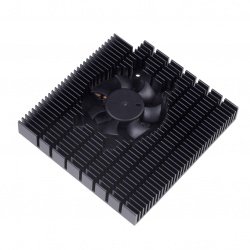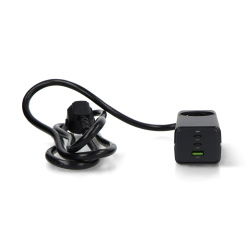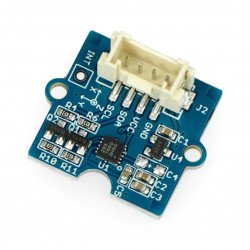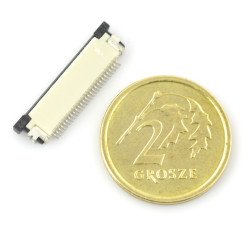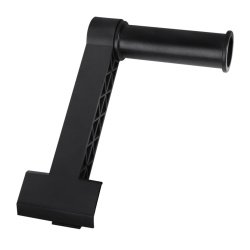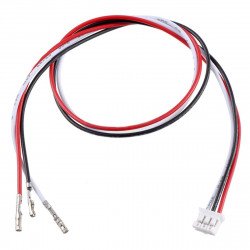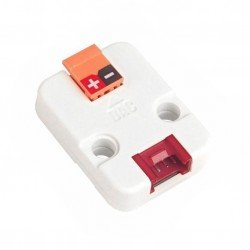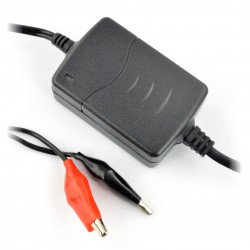Gel batteries are one of the lead-acid batteries, which are distinguished by the presence of gel electrolyte. They are formed by combining sulphuric acids with silica. The first batteries of this type appeared on the market in the 1960s in the USA. Unlike typical batteries, they do not need to be placed vertically. There is also no need to replenish the electrolyte with gel, which does not evaporate. Very often, gel batteries are maintenance-free. They are very resistant to vibrations, shocks, impacts and high temperatures. They are therefore able to work well in difficult conditions. There are also no electrolyte leaks, which lead to corrosion. In this case too, the battery is protected against corrosion. They work debtlessly and reliably. They are used in devices with high energy consumption. They are used in many vehicles. Check which gel batteries are available in our offer. Compare the proposals of several manufacturers, focus on the parameters and adjust them to your device.
Gel batteries
Universal Lead-Acid Smart Charger BAT1126
Battery charger for 12 V DC gel batteries from 4 Ah to 7 Ah. Powered by 230 V mains voltage , with a maximum output of 10 W .- Sale
- SPECIAL OFFERS
See also
A design with many advantages and a wide range of applications
Unlike lead-acid batteries with liquid electrolyte commonly used in cars, the electrolyte in a gel battery is in the form of a viscous gel and is tightly closed. In this way, the risk of electrolyte leakage is eliminated and the gel battery can be installed in devices and stored in any position. The possibility of electrolyte leakage during proper use of the battery has been reduced to zero (classic lead-acid batteries are exposed to liquid electrolyte leakage, e.g. in the case of a mechanically damaged battery).
Applications of gel batteries to power electrical devices
Each gel battery cell is equipped with a safety valve that automatically regulates the pressure in the event of a risk of overcharging and prevents the cell from coming into contact with air and dirt - gel batteries are maintenance-free and must not be opened, as this may result in permanent damage to the battery, but also a fatal accident! The design of gel batteries has a number of advantages that allow them to be used to power many different devices in various environmental conditions. Gel batteries are resistant to vibrations, work at low temperatures, allow deep discharge without fear of loss of performance and high power efficiency. They are also perfect for home solar installations. In addition, small and medium capacity batteries are ideal for stationary and mobile applications (e.g. powering cleaning machines). They stand out, among others: low internal resistance. In gel models, the maximum power of the battery has been improved, thanks to which it can safely and stably power consumers with relatively high energy consumption.
Other uses of gel batteries
Thanks to this, they can be successfully used to power small electric vehicles, emergency power systems and portable devices equipped with electronic systems sensitive to voltage changes. Gel batteries are used to power wheelchairs and electric wheelchairs, as well as basket lifts, forklifts and electric wheelchairs. In addition, gel battery is used to provide energy to commercial vehicles, platform vehicles, all types of golf vehicles, electric scooters and to power electrical appliances. They are used as an emergency power supply. Gel batteries are used, among others, in small wind farms and solar installations.
How to properly charge a gel battery?
Gel batteries are characterized by a safe, maintenance-free design and a large number of charging cycles. In order for you to be able to use your battery as long as possible without any problems, you must ensure that it is properly charged. Due to their more technologically complex structure compared to lead-acid batteries with liquid electrolyte, gel batteries should be charged using a microprocessor-controlled mains charger. Charging gel batteries using a special charger is effective and completely safe. Such a charger enables multi-stage charging, starting with the process of diagnosing and desulphating the battery. The battery should be fully charged after each use. Charging should be carried out in a dry, ventilated room at a temperature of 0ºC to 40ºC - valves may activate during charging.
Proper charging of gel batteries with – continued
When the voltage at the battery poles reaches the appropriate value, the charging process must be automatically interrupted and the charger must enter the voltage maintenance state, depending on the ambient temperature. For example, at an ambient temperature of 20ºC, for a gel battery with a rated voltage of 12V, the optimal voltage during charging is 14.84V, and the optimal voltage in the holding state after charging is completed is 13.94V. Our store's offer also includes intelligent chargers (see also: Battery chargers), thanks to which you will be able to quickly and properly charge your batteries. High charging current enables fast, effective and, above all, safe energy replenishment.
Gel batteries - FAQ
A gel battery is a more modern version of a conventional lead-acid battery , which uses a special electrolyte cross-linked in the form of a gel with an admixture of silica instead of a liquid electrolyte (acid).
For cyclic charging of a gel battery, it is best to use specially designed electronically controlled (microprocessor) chargers , also known as automatic chargers - they provide excellent control over the charging process.
The durability of gel batteries depends on the environmental conditions and type of work - branded gel batteries are able to operate continuously for up to 12 years, hence they are perfect for use in uninterruptible power supplies (UPS) or solar installations.
The gel battery is much better than the old type of lead-acid batteries with liquid electrolyte. It does not require refilling, remains tight in various working positions and does not pose a risk of electrolyte leakage in the event of mechanical damage - AGM batteries also have similar advantages.
Gel batteries can be easily connected in series to increase the total output voltage. It is also possible to connect them in parallel (to increase the capacity at the same voltage), provided that both batteries have identical parameters (voltage and capacity) and a similar degree of consumption.






























































































































































































































































































































